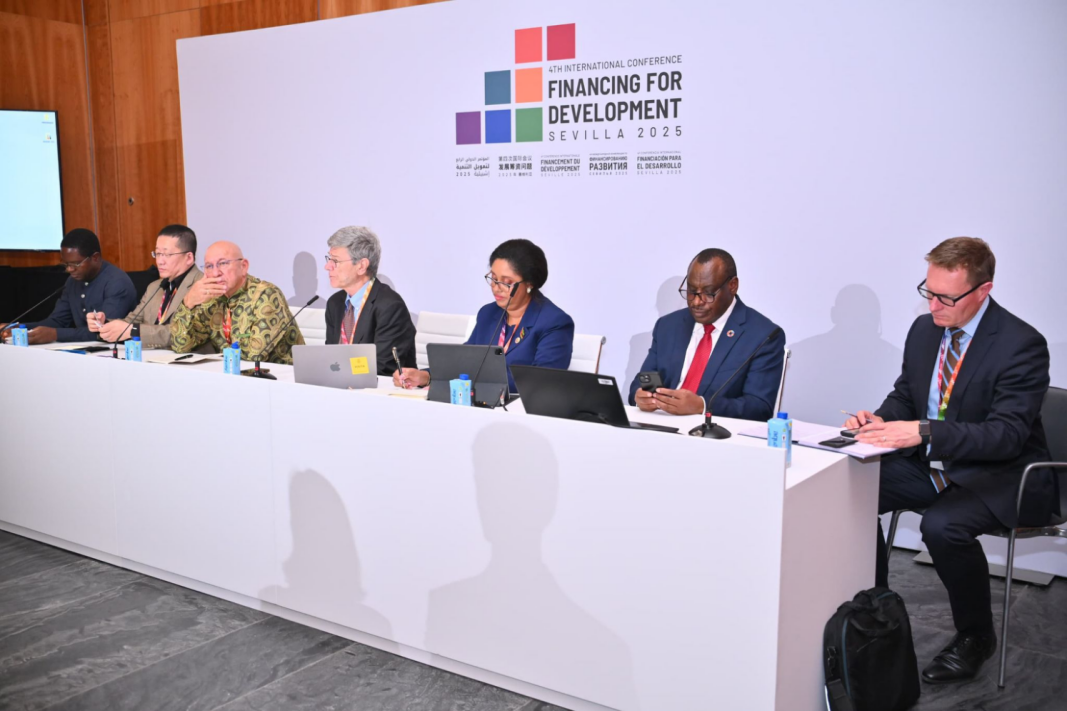
The Fourth United Nations Conference on Financing for Development (FFD4) opened on June 30 in Seville, a city in southwestern Spain. At the side event "Reforming the International Financial Architecture: Aligning Capital Flows with Development and Climate Goals", Jeffrey Sachs, President of the UN Sustainable Development Solutions Network (SDSN), emphasized that eliminating the global development deficit requires a systemic reform of the current international financial architecture. He called for the creation of innovative financing tools to overcome capital accumulation bottlenecks, a restructuring of the international credit rating system, and the establishment of a dedicated long-term financing mechanism for developing countries.
Financing for development is a key means of implementing the 2030 Agenda for Sustainable Development. According to the UN, there is currently a global annual financing gap of USD 4 trillion for sustainable development. In this context, the FFD4 sets out two main goals: first, to mobilize large-scale funding with tangible impact, and second, to reform the international financial system to address emerging challenges and ensure equitable global cooperation.
Sachs pointed out that the most significant difference between developed and developing countries lies in the disparity in human capital, infrastructure capital, and business capital accumulation. For instance, he noted that Mozambique's annual per capita budget is only USD 170, making it nearly impossible to meet basic development needs such as primary education, thus creating a "poverty trap."
Currently, the international organizations approach of "increasing revenue and reducing debt" has yielded limited results in impoverished developing countries. "Even though Mozambique's tax revenue reaches 26% of its GDP, the government's budget is still insufficient to fund basic investments in education, healthcare, and infrastructure. Due to a lack of credit rating under the existing international financial system, it is unable to access long-term concessional loans and is simultaneously at risk of short-term debt default," Sachs explained.

Accelerating the implementation of the 2030 Agenda for Sustainable Development and building a more inclusive international financial system has become a shared demand among developing countries. Addressing the challenges of green finance is particularly urgent. During the session, Egypt's Minister of International Cooperation Rania Mashat shared her country's experience in development financing, while Zhang Jianyu, Chief Development Officer of the BRI International Green Development Coalition (BRIGC), highlighted China's innovative practices in green finance and called for stronger efforts by international financial institutions to advance green transformation.
Mashat explained that in recent years, Egypt has effectively coordinated domestic budgets with international funding, forming a "government-led + market-participated" dual-driving model. Over the past four and a half years, through partnerships with institutions such as the African Development Bank and the European Bank for Reconstruction and Development, Egypt has mobilized USD 15 billion in private capital, primarily invested in green transition, water resource management, and food security.
Eliminating the global development deficit requires systematic reform of the current international financial architecture and breaking through the bottleneck of capital accumulation through innovative financing tools. Sachs proposed a new financing model combining "ultra-long maturities and high leverage," advocating for concessional loans with maturities over 50 years and amounts exceeding a country's GDP to support development in impoverished nations. He reiterated the need to reform the international credit evaluation system and establish a long-term financing mechanism specifically targeting developing countries.
In recent years, China's green finance sector has seen rapid progress, playing a critical role in supporting high-quality economic and social development as well as high-level environmental protection. Zhang Jianyu shared four key elements behind China's success in green finance: (1) strong coordination between financial and environmental regulators to break industry silos through policy synergy; (2) continuous innovation and diversification of green financial products to meet low-carbon transition needs across sectors; (3) a carbon market that provides clear price signals, offering certainty for investment decisions; and (4) the deepening development of carbon finance, acting as a driving force for green financial reform. He emphasized that global green financial reform should prioritize knowledge-sharing and resource integration among developing countries. For example, aligning China's Belt and Road Initiative with Brazil's Ecological Transformation Plan could serve as a model for South-South cooperation in advancing green development.
The side event was co-hosted by the Colombia Center on Sustainable Investment, SDSN, and BRIGC. It aims to explore how to achieve equitable, stable, and growth-oriented capital flows through ambitious and pragmatic reforms of the international financial system. On July 3, BRIGC will also host the side event "South-South Cooperation on Green Investment and Finance," where experts from China and international will discuss strategies to strengthen South-South cooperation in green finance and provide momentum for sustainable development in developing countries.
Copyright © 2020 BRI International Green Development Coalition. All rights reserved.
Address: No.5 Houyingfang Hutong, Xicheng District, Beijing 100035, China
Postcode: 100035
Fax: (86)10-82200539
E-mail: secretariat@brigc.net